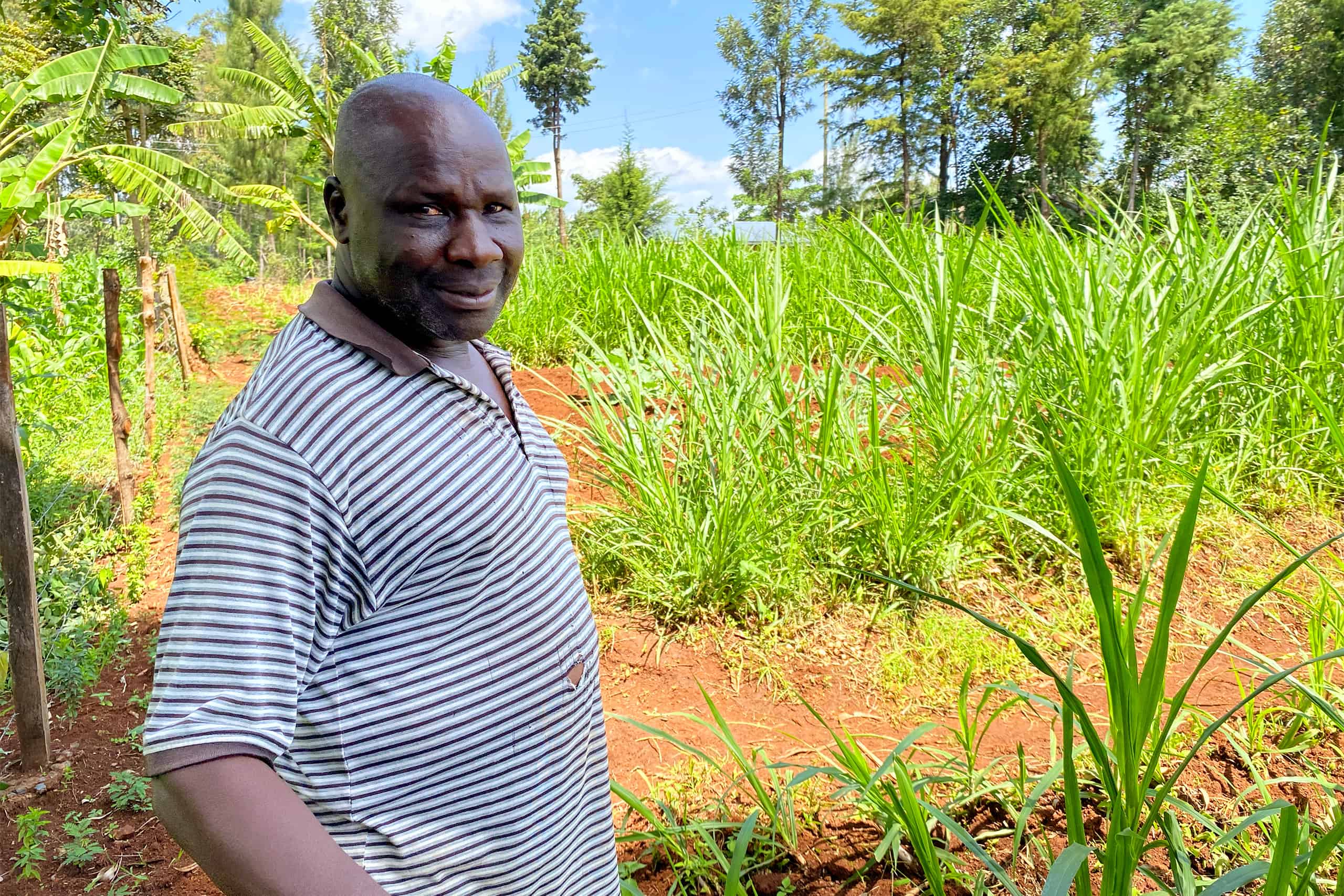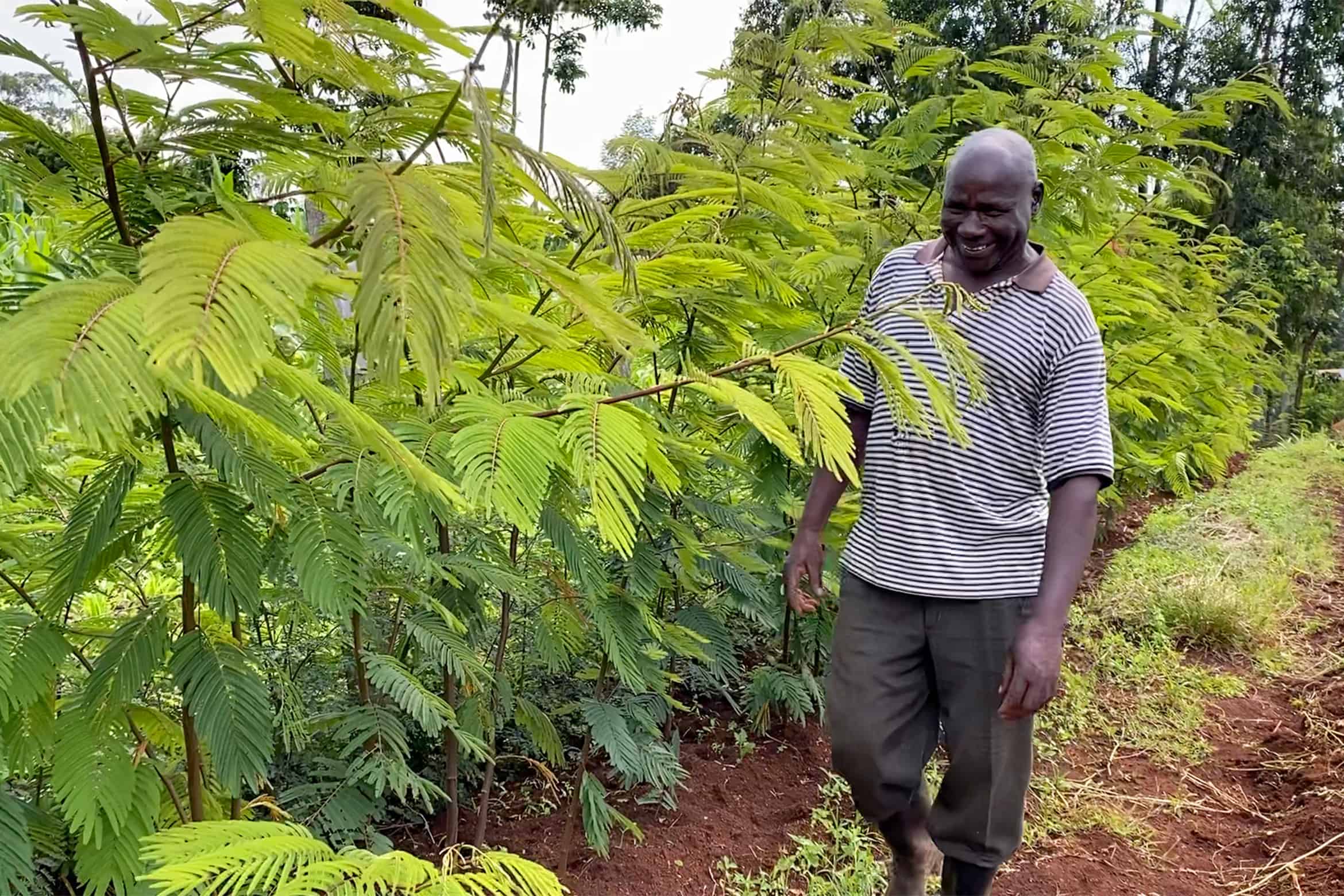Tobias Omondi didn’t always feel so optimistic. From his farm in Kisumu, in western Kenya, his outlook on his land and family’s future rose and fell with market fluctuations and increasingly unpredictable growing seasons.
“Getting money,” says Tobias, “was not very easy.”
The compound challenges of water access, climate change, and market volatility are common struggles among farmers in western Kenya. But since he joined the Forest Garden training program in 2020, Tobias and his family have experienced a welcome change.
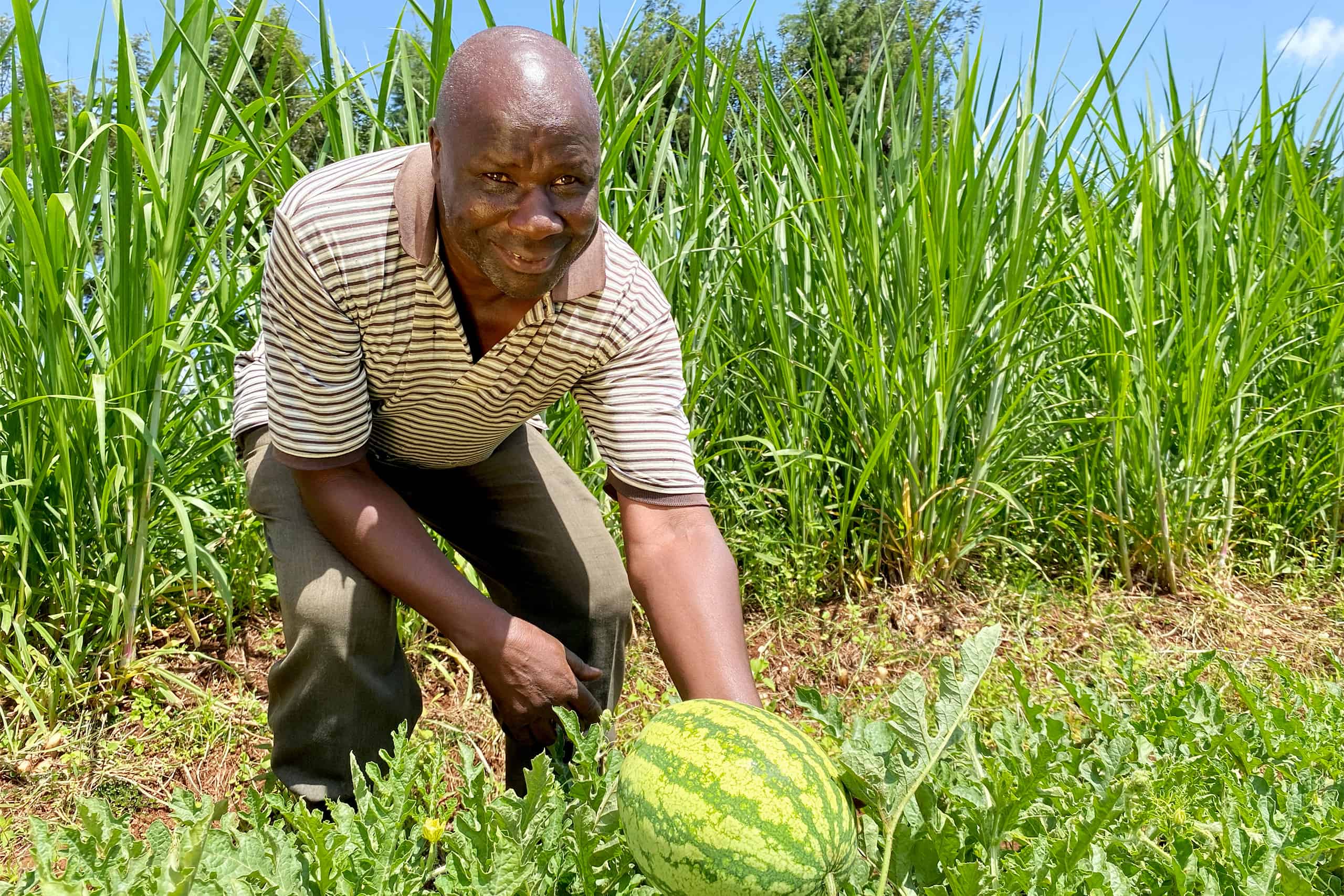
In his Forest Garden, Tobias grows a wide variety of nutritious fruits and vegetables, including watermelon.
Tobias lives and farms in a region of western Kenya known as the Lake Victoria watershed. On the outskirts of the city of Kisumu, farmers like Tobias have long made up the backbone of the region’s food system. But in recent years, farming has been harder than ever.
“Before, the weather was predictable,” Tobias recalls. “But now, it is completely unpredictable. The big challenge I had before was water. Because we depend on rain.”
Tobias’ farm depends on regular, reliable rainfall. Which means his family and his community’s success is tied to the weather. When rains became unpredictable and harvests began to suffer, Tobias knew it was time for a change.
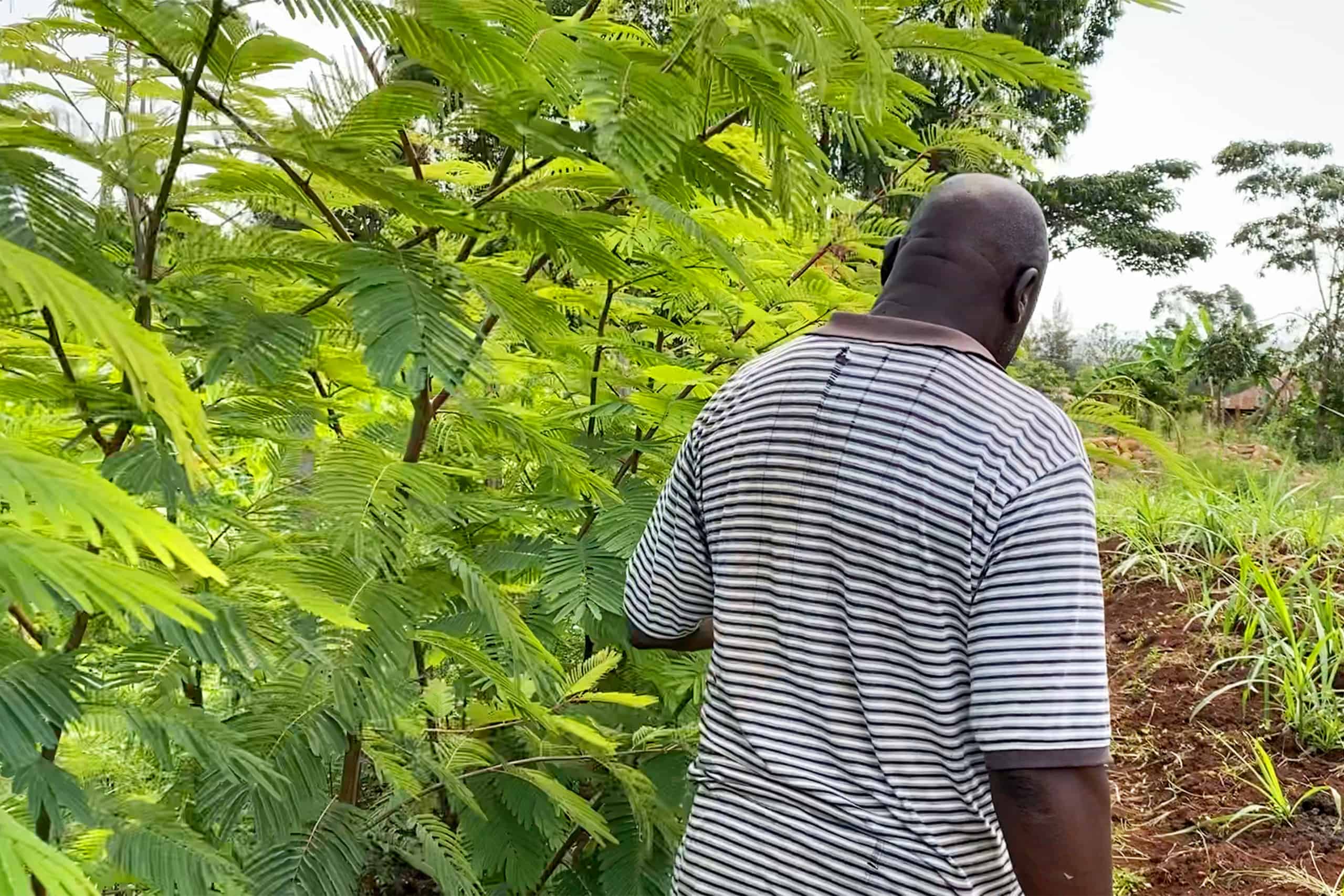
Tobias joined the Forest Garden Training Program because he was impressed by his neighbors’ living fences.
Trees for the Future (TREES) opened operations in Kisumu in 2020. Some of Tobias’ neighbors began training in the Forest Garden Approach, and invited Tobias to see for himself what they were learning. It didn’t take long for him to realize the overwhelming benefits of his neighbors’ young Forest Gardens.
“I was impressed,” Tobias remembers. “What impressed me was the green wall. Because my farm was being invaded by surrounding people. They walked inside it, they took my things. So, when I heard about the green wall, I was impressed, and I joined immediately.”
In the first phase of the four-year Forest Garden training program, farmers plant dense layers of fast-growing trees that surround the farm. These trees form a living fence, or a green wall, that protect farmers’ crops from roaming livestock and provide natural security, as well as reducing erosion and increasing soil moisture. To date, Tobias has planted more than 2,000 trees on his land.
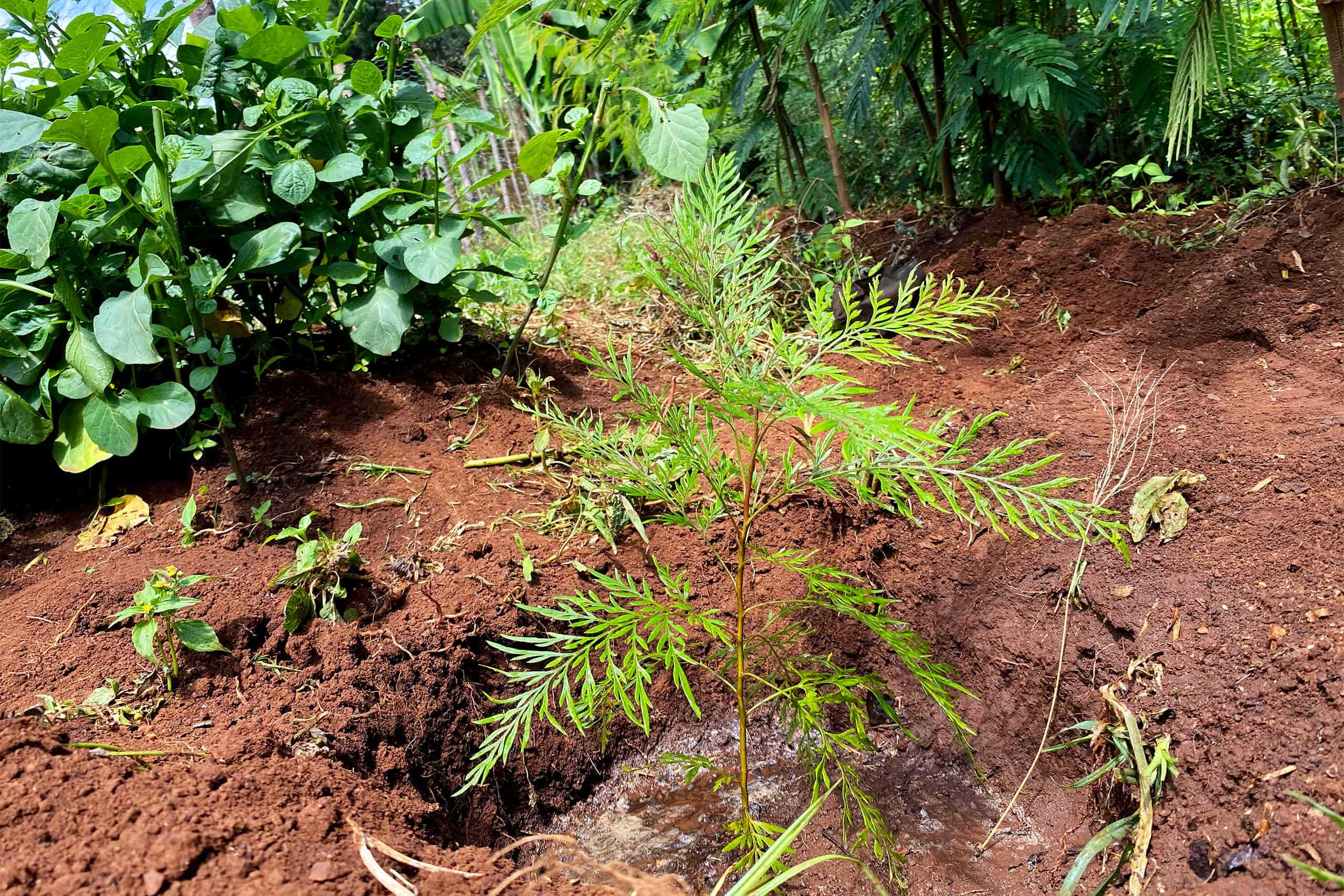
After two years in our program, Tobias has planted over 2,000 trees on his land.
Just over two years into our program, Tobias’ Forest Garden is already addressing the central challenges he faced before the Forest Garden Approach. The trees he planted protect his farm from external challenges while simultaneously addressing challenges with water access. And having diversified his crop production, he has a reliable, sustainable harvest to provide for his family and take to market year-round.
“Now, I can get something to put in my pocket.”
Tobias is investing his newfound income in his family.
“My lastborn is 17 years old,” he says. “He is in high school now, so I am using the money to pay school fees…and our daily bread.”
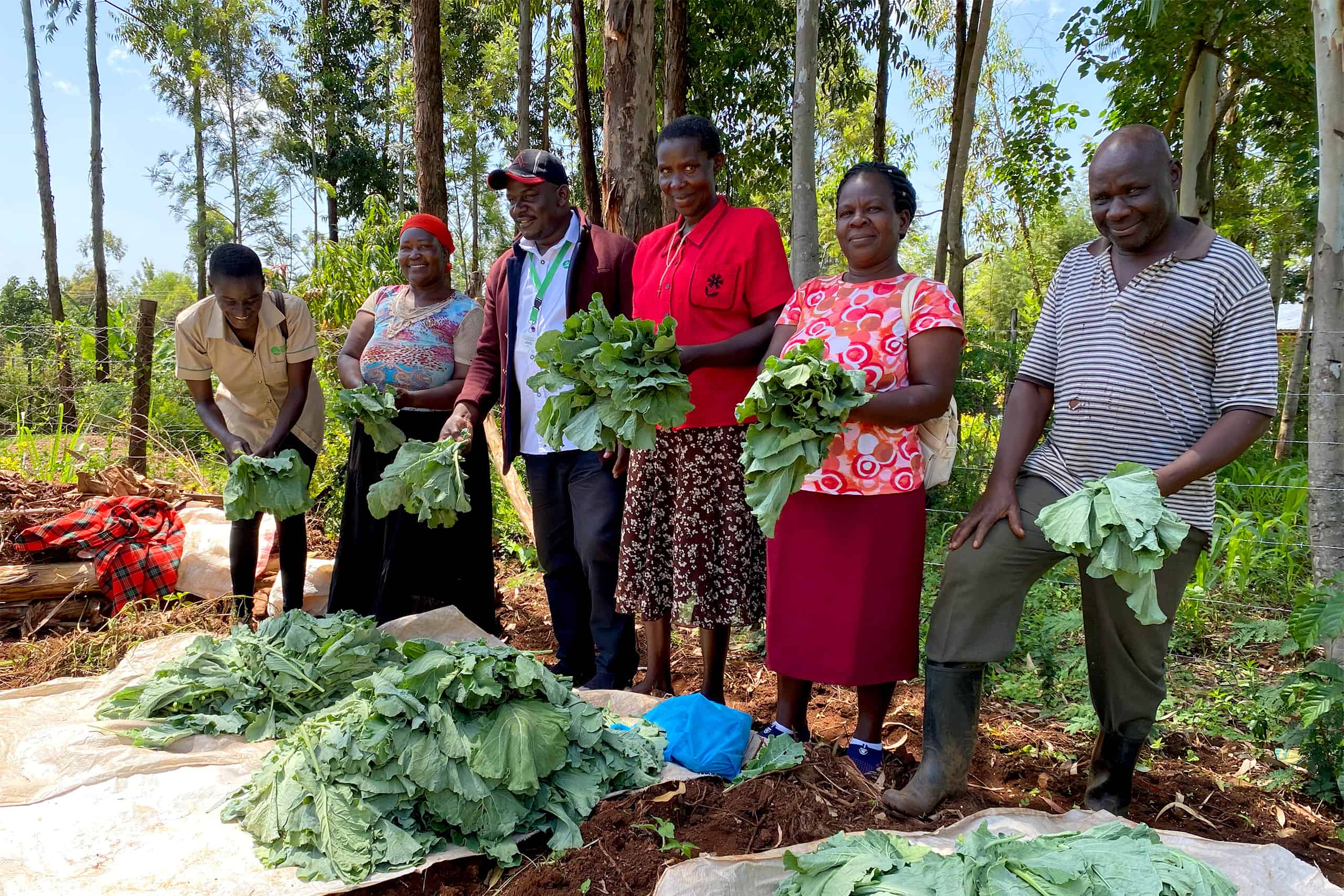
Tobias and his farmer group in Kisumu, Kenya.
Tobias’ future income potential looks even brighter with the launch of TREES’ new carbon project in western Kenya.
Helping farmers enter the burgeoning global carbon market, the new project is a historic step for TREES and 15,000 Forest Garden farmers like Tobias. Moving forward, Tobias will earn money for the carbon he is sustainably capturing and storing through the thousands of trees he is planting and caring for on his land.
Trees for the Future has supported more than 8,000 farmers in Kenya to date, and more than 41,000 across their program. Donate today to support more farmers like Tobias.
